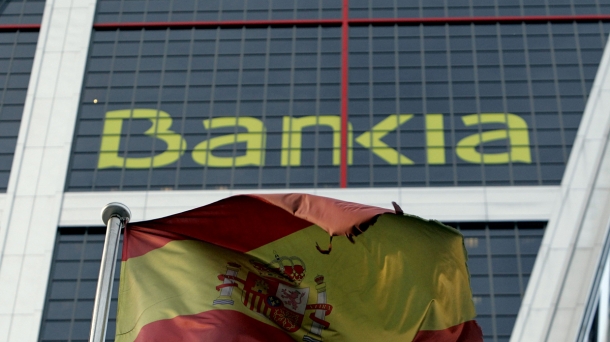albisteak
Debt crisis
How does the bailout of Spanish banks alter the equation?
AP
Madrid
The eurozone's $125 billion package of rescue loans for Spain's troubled banks is supposed to help them deal with huge losses on real estate investments.
-

Troubled bank Bankia. Photo: EFE
The eurozone's $125 billion package of rescue loans for Spain's troubled banks is supposed to help them deal with huge losses on real estate investments and promote economic growth by making it easier for them to lend money to companies and individuals.
But the rescue package hasn't eased jitters about the country's financial system, it's worsened them.
Bond investors have reacted to the deal by driving the (country's) government's borrowing rates higher. That increases the likelihood that the government itself will need help from the rest of Europe to get out from under its rising debt burden.
Spain's debt as a proportion of its annual economic output was forecast to be 80 percent this year before the bank bailout existed. With the bank bailout included, the country's debt-to-GDP ratio rises to 90 percent or more, according to some private analysts. When a country's debt burden exceeds 90 percent, it's generally considered bad for an economy's health.
Spain's total debt includes bonds issued by the central, regional and local governments, plus other liabilities, such as unpaid bills to supplier.
Spanish banks have also been hurt by the bailout. As the interest rate on government bonds rises, the value of the bonds already owned by banks falls.
orain albiste

albisteak
Nuclear Plant of Garoña
Nuclear Safety Council allows Nuclenor more time to request extension
Erlazionatutako edukiak:

albisteak
Noos corruption case
Judge to investigate Princess Cristina for presumed tax irregularities

-
albisteak
2013 data
Exports from the Basque Country were down by 4.4% in first quarter
-
albisteak
Poll
PNV would repeat win if elections were held now
-
albisteak
New anti-eviction law
Andalucia begins proceedings to seize confiscated houses from banks
-
albisteak
London attack
British police ponder conspiracy after soldier murder
-
Kirola
Giro d'Italia
Nibali tightens grip on overall lead after stage victory
© EITB - 2024 - Pribatutasun Ataria - Lege Oharra - Cookien erabilera - Cookien konfigurazioa


